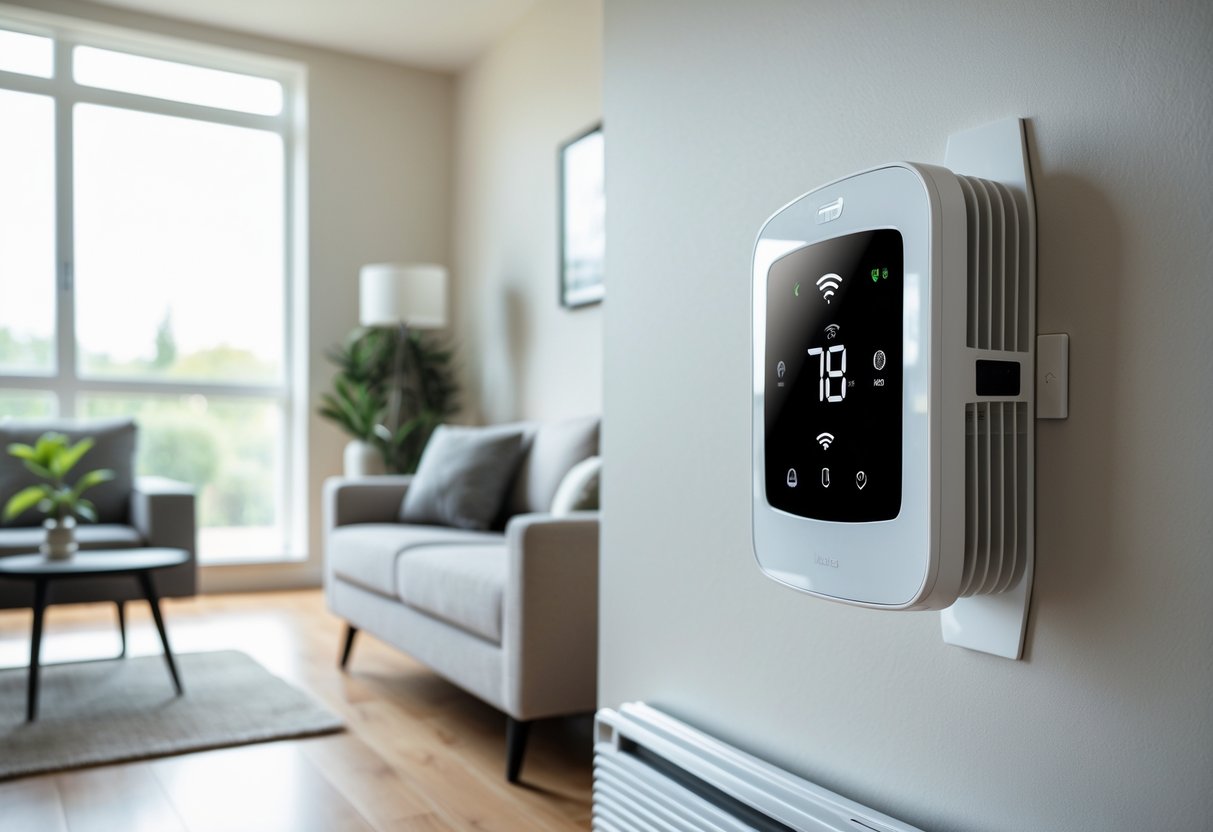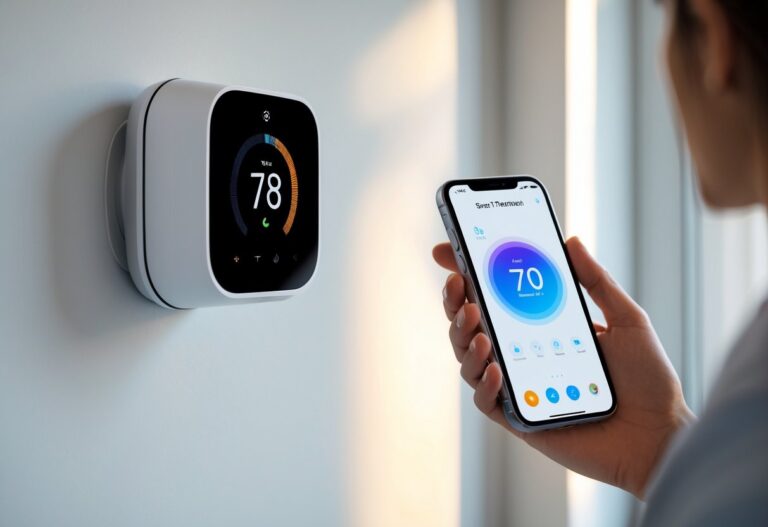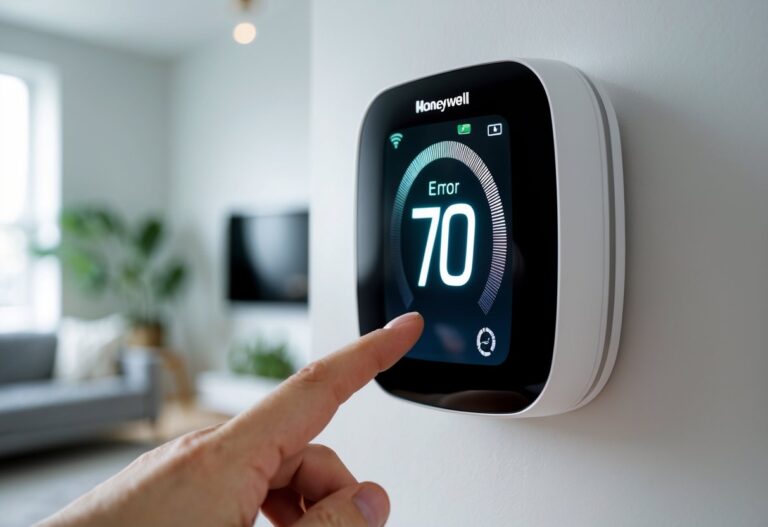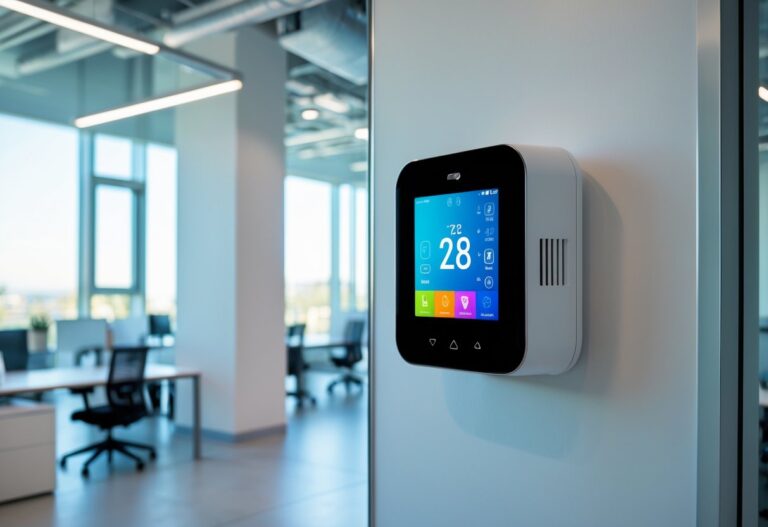If you use electric baseboard heat, you might wonder if you can upgrade to a smart thermostat for more control and savings. You can use a smart thermostat with electric baseboard heat, but it needs to be a model made for high-voltage systems. Not all smart thermostats will work, so picking the right one is important if you want smart features like app control or scheduling.

Upgrading to a smart thermostat can bring benefits like easier temperature control, remote access, and possibly lower energy bills. You’ll need to look for models designed for baseboard heaters, such as those that handle high-voltage wiring. Choosing the correct thermostat and installing it correctly are key steps if you want your upgrade to go smoothly.
Key Takeaways
- Only smart thermostats for high-voltage systems work with electric baseboard heaters.
- Smart thermostats add convenience, but you must select a compatible model.
- Installation and wiring need careful attention for proper function.
Understanding Smart Thermostat Compatibility With Electric Baseboard Heat
Electric baseboard heaters work differently from traditional central HVAC systems and have special wiring needs. Knowing how these systems operate and what types of smart thermostats work with them can help you choose the right device for your home.
How Electric Baseboard Heaters Work
Electric baseboard heaters are often used for room-by-room heating, especially in older homes or in spaces without ductwork. They use electric resistance heating, where electricity passes through metal heating elements inside the heater. This creates heat, which rises and warms the room.
Most electric baseboard heaters are controlled by a wall-mounted thermostat or a built-in dial on the unit. These heaters operate independently, so you might have separate controls for each room or zone. You may also see hydronic baseboard heaters, which heat water inside pipes, but most are electric.
Unlike central heating, there’s no forced air, blower, or central control panel by default. That means upgrading to a smart thermostat may not be as simple as swapping out a single thermostat.
Voltage Differences: Line vs. Low Voltage Systems
The voltage of your heating system is one of the most important things to know before buying a smart thermostat. Most electric baseboard heaters use line voltage, which is usually 120 or 240 volts. These are high enough voltages that not all thermostats can handle them.
In comparison, most central heating and air systems—like furnaces and heat pumps—use low voltage, around 24 volts. Many popular smart thermostats (like Nest or Ecobee) are designed only for low voltage systems. They will not safely work with electric baseboard heat, which uses line voltage.
You should always check your existing thermostat and wiring to see if it operates on line voltage, or ask an electrician for help if you’re unsure. Installing the wrong thermostat type can be unsafe and may damage your heating system.
Types of Smart Thermostats for Baseboard Heaters
To control electric baseboard heating with smart features, you need a line voltage smart thermostat. These thermostats are made for electric resistance heaters and can handle 120 or 240 volts. Some leading brands make WiFi-enabled thermostats specifically for baseboard heaters.
Key features of line voltage thermostats include:
- WiFi or smart home connectivity
- Programmable schedules
- Remote control via an app
- Compatibility with Amazon Alexa or Google Assistant
Low voltage smart thermostats, such as the Google Nest or Ecobee SmartThermostat, are not compatible with high voltage electric baseboard heaters. Always confirm that the smart thermostat you choose is rated for line voltage systems (120/240V) and designed for electric heating systems, not just central HVAC units.
Compatibility Issues and Key Considerations
When switching to a smart thermostat for electric baseboard heat, you’ll need to consider a few compatibility issues. First, not all smart thermostats can safely handle line voltage or the current required by electric resistance heaters.
Some compatibility issues to watch out for:
- Voltage mismatch: Trying to use a low voltage thermostat on a line voltage system can be dangerous.
- Wiring differences: Your home’s current wiring may need upgrading to support a new smart thermostat.
- Zoning: If you have multiple baseboard heaters with individual controls, you’ll need a separate smart thermostat for each zone.
It’s important to look for specifically labeled line voltage smart thermostats and read product manuals closely. If you are unsure, consult with an electrician to make sure that your chosen thermostat is compatible with your electric baseboard heating system.
Benefits and Limitations of Using Smart Thermostats With Electric Baseboard Heaters
Smart thermostats can make your electric baseboard heaters more efficient and easier to control. These devices often help lower energy use, give you more options to manage your heating, and can improve how comfortable your home feels.
Potential for Energy Savings and Lower Heating Costs
Switching to a smart thermostat can reduce how much electricity your baseboard heaters use. By learning your habits or letting you set detailed schedules, a smart device makes sure your heaters only run when they are needed.
Some smart thermostats show you energy reports so you can see when you use the most power. If you change your routine or leave the house, you can quickly adjust your heating to prevent waste.
Features like vacation mode and geofencing help stop your heaters from running when no one is home. Using these can save you money on your energy bills and may also help decrease your environmental impact.
Scheduling, Remote Access, and Smart Features
You can use a smart thermostat to create a custom heating schedule for each day or week. This means your heaters can turn on before you wake up and cool down while you sleep, which increases energy efficiency.
Remote access with a mobile app lets you control the temperature from anywhere. If you forget to turn off the heat, you do not have to go back home—just change it from your phone.
Many smart thermostats offer extra features, like energy insights and real-time alerts. Some models work with voice assistants or home automation systems, which makes it easier to use your heating system alongside other smart devices.
Comfort and Temperature Control Improvements
Smart thermostats help keep the temperature more steady throughout the day. Instead of wide swings in temperature, smart controls adjust your heaters in small steps for more comfort.
Some devices have adaptive learning, which means the thermostat figures out how long it takes your room to get warm and adjusts for the best results.
Features like zoning—if available—let you set different temperatures in different rooms, making your house comfortable no matter where you are. However, not all baseboard heater systems support zoning, so check your setup first.
Choosing and Installing a Smart Thermostat for Electric Baseboard Heaters
Selecting the right smart thermostat for electric baseboard heaters involves understanding compatibility, voltage, and specific product features. Installation can also require extra steps or professional support, especially for high-voltage setups.
Popular Models and Brands
Some smart thermostats are built especially for electric baseboard heaters. Popular brands include Mysa, King ESP, and Stelpro. The Mysa Smart Thermostat is one of the most common choices, supporting both 120V and 240V systems and offering WiFi connectivity. King ESP thermostats are also designed for line voltage heaters and include digital controls and scheduling features.
Traditional smart thermostats like Nest or Ecobee mainly support low voltage (24V) systems and do not work natively with baseboard heaters. However, if you want to use a Nest thermostat with electric heat, special external relays or transformers are needed. For Z-Wave smart home systems, the Stelpro Z-Wave Thermostat offers smart controls for baseboard heating and integrates well with smart hubs.
| Brand | Voltage Supported | Connectivity | Special Features |
|---|---|---|---|
| Mysa | 120/240V | WiFi | App control, schedules |
| King ESP | 120/240V | Digital | 7-day programmable |
| Stelpro Z-Wave | 240V | Z-Wave | Smart home integration |
Installation Process and Professional Help
Electric baseboard heaters are high voltage and can be dangerous to work with. Installing a line voltage thermostat often involves working directly with 120V or 240V wires. If you have no experience with electrical setups, it is best to hire an HVAC professional or a licensed electrician.
For most baseboard heater thermostats, you will remove the old wall thermostat, connect the new thermostat’s wires to the incoming line and heater load, and mount the thermostat to the wall. Some models, like the Mysa thermostat, provide step-by-step app instructions and label wires for clarity. If your current thermostat is a single pole but your new device is double pole, you may need to update wiring or devices.
Professional installation is strongly recommended if you are unsure about wiring types, working with relays, or installing extra components such as external transformers. Safety should always come first.
Wiring, Voltage Compatibility, and Components
Smart thermostats for baseboard heaters must support line voltage (either 120V or 240V). Check your heater’s voltage rating and total heating load (watts or amps) before making a purchase. The thermostat must be rated to handle the total wattage of all heaters on that circuit.
Most smart baseboard thermostats, like Mysa and King ESP, are designed for direct connection without extra relays. In contrast, traditional smart thermostats like Nest or Ecobee need a relay or transformer to safely control high voltage heaters. This adds cost and complexity.
A typical wiring setup may include:
- Line wire (from the breaker)
- Load wire (to the heater)
- Ground wire
- Possibly a neutral (check manufacturer requirements)
Be sure to turn off power at the breaker before wiring, and always follow included manuals. Improper wiring can damage your thermostat, heater, or cause a fire risk.
Integration With Smart Home Systems
Several smart thermostats for electric baseboard heaters integrate with home automation systems. The Mysa thermostat offers Apple HomeKit, Google Assistant, and Amazon Alexa compatibility for voice and app control. Stelpro Z-Wave allows control with a Z-Wave hub, which can work with platforms like SmartThings.
Integration features may include:
- Remote temperature control from your phone
- Scheduling and automation
- Voice assistant commands
- Energy use reports
However, not all programmable thermostats for electric baseboard heaters offer the same level of smart technology. If smart home integration is important, confirm that the thermostat specifically lists compatibility with your system, such as HomeKit or Google Assistant. Some digital thermostats only offer basic programmability without smart home features.
Considerations, Alternatives, and Advanced Features
When updating your electric baseboard heat, it is important to look at what smart thermostats offer, how they compare to older models, and which systems each type works with best. You should also pay attention to special functions that can help you save energy and improve comfort.
Upgrading From Traditional Thermostats
Switching from a non-programmable thermostat to a smart thermostat for baseboard heaters can change how you control your home’s temperature. Older thermostats often lack scheduling, remote access, and easy adjustments.
A programmable thermostat allows you to set different temperatures for specific times of day, but a smart upgrade adds features such as learning your patterns, adjusting for weather changes, and integration with other smart devices. Some smart models allow you to manage your baseboard heaters from your phone or a smart home assistant.
Electric baseboard smart thermostats, like Mysa, are designed for high voltage (120-240V) systems, which is important since low voltage models will not work with most electric baseboard heat. If you’re upgrading several thermostats at once, you may need advice from hvac professionals to make sure they are installed safely.
Smart Technology in Various Electric Heating Systems
Not all electric heating systems work the same way or require the same thermostat. Electric baseboard heaters, wall convector heat, fan-forced wall convection heat, and hydronic heaters may each need a particular type of thermostat.
Smart thermostats that work with heating and cooling systems sometimes are not compatible with high-voltage electric heating, so you must check voltage requirements and wiring.
Digital thermostats with smart features are often made specifically for electric baseboards, but some alternatives exist. For example, some systems add a relay between a low-voltage smart thermostat and a high-voltage baseboard heater. Always check compatibility, and if unsure, ask an expert to avoid damage or safety issues.
Vacation Mode, Energy Reports, and Insights
Some of the most helpful advanced features in electric baseboard smart thermostats include vacation mode, detailed energy reports, and energy insights.
With vacation mode, you can set your heaters to use less energy while you are away, then return the temperature to normal before you get back. Many smart upgrades also send regular energy reports to your phone or email. These show how much power your heaters use and may offer tips to lower your bills.
You can use energy insights to find which rooms or times of day increase energy use. By understanding this data, you can adjust programmable thermostats or make use of smart home integration features, like linking your heating with a voice assistant or automating it with other devices. This helps you use less energy while keeping your home comfortable.





